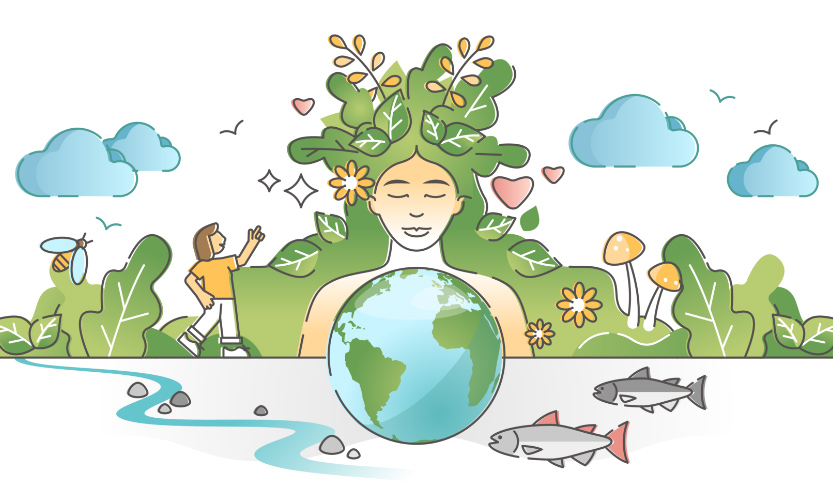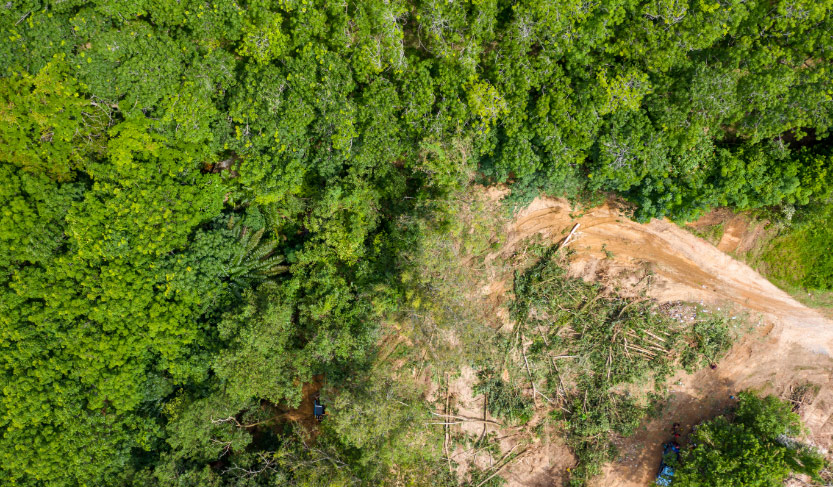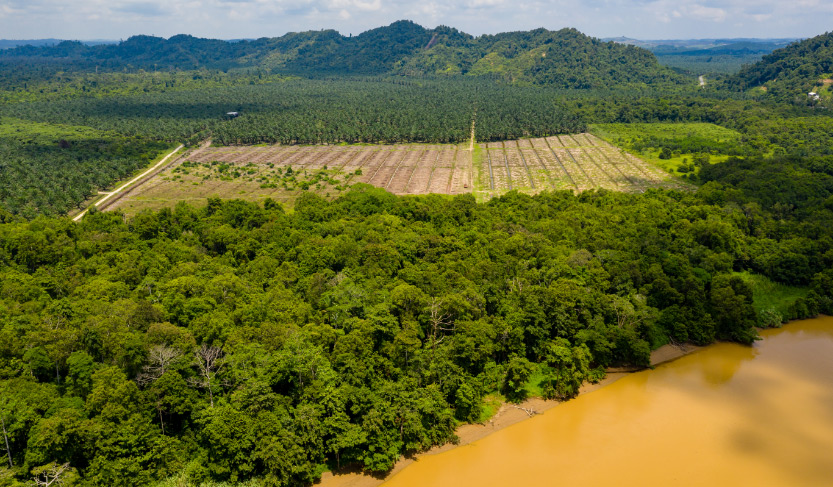
Uncovering the Root Causes of Deforestation
Zusammenarbeit, gegenseitige Hilfe und Wechselwirkung gehören zu den wesentlichen Merkmalen im Großkörper der Welt des Seins; denn alle erschaffenen Dinge stehen in enger Beziehung zueinander, eines ist vom anderen beeinflusst oder nutzt es, unmittelbar oder mittelbar.

Once upon a time, we rested on the lap of our kind mother, the Earth. We loved and respected its elements. We received food, medicine, peace, and joy from her. Gradually, drunk with the pride of scientific and industrial progress, the fire of our indulgence and greediness ignited, and we considered ourselves the owners of everything that existed in nature. We wanted more and more and assumed dominating nature and destroying it as part of our mastery. Ignoring the importance of forests and trees, we plunder them for profit without replanting.

The Vital Role of Forests
According to the United Nations Economic Commission for Europe (UNECE), forests cover 31% of the total land area. The world's forests store about 296 gigatons of carbon above or below the surface of the Earth, and one tree can sequester 150 kilograms of carbon dioxide annually. While all forests have the power to conserve the climate, trees in tropical forests trap more carbon dioxide and evaporate more water. In doing so, they produce a thick cloud cover that reflects sunlight into space, which is why it's a climate-cooling superpower.1
History of the Disaster We Brought to the Forests
According to National Geographic on July 15, 2022, deforestation is the purposeful clearing of forest land. As the Food and Agriculture Organization of the United Nations estimates, the annual rate of deforestation is about 1.3 million square kilometers per decade. While about 1.8 billion hectares of forest have been destroyed in the past 5,000 years, this trend has intensified since 1950. 2 More than 420 million hectares of forest have been lost in the 30 years from 1990 to 2020, 90% of which were in tropical area 3, and still, about 7.3 million hectares of forest are destroyed every year. 4 According to a report published by BBC News on February 11, 2022, Amazon, the world's largest rainforest, has had the highest rate of deforestation in the last 6 years, with January 2022 being a record for that period. Between January and June, one thousand five hundred square miles of forest were lost in the Brazilian Amazon.
Why Deforestation Can Be More Harmful in Tropical Regions
As National Geographic reported on July 15, 2022, the highest amount of deforestation occurs in tropical forests, which play a vital role in the survival of the Earth's creatures. Tropical forests are Earth's most diverse and iconic biomes, with very high annual rain, high standard temperatures, nutrient-poor soil, and a high variation of living species. They regulate the world's climate, store nearly half of the world's rainwater, and contain plants that are used in modern medicine.

Although the soil is expected to be so nutrient-rich in tropical forests because of the decomposition of foliage, heavy rains in rainforests wash organic material from the ground. Nevertheless, the great variety of decomposers, such as bacteria and fungi, accelerate the decay operation enough that the nutrients released by decomposition are taken up quickly by the plants instead of stored in the soil. According to a report of the Community Research and Development Information Service (CORDIS) in February 2017, increased tree size and root biomass by water availability positively affects the ability of trees to store carbon above and below ground.
The long-living, enhanced root biomass and massive woody trunks of trees in tropical forests help them absorb and store more carbon.
Some Causes of Deforestation
Technology
The industrial revolution, technological developments, and diversity of modern products they have brought to human lives were accompanied by the negligence of the sustainability and preservation of natural resources for consumption.
Population
A cross-national analysis shows the population growth rate as the most frequently cited cause of deforestation from 1968–78 in 39 African, Latin American, and Asian countries. 5 Large swaths of forest get removed to provide infrastructure for the expansion of cities, urbanization, and accommodations.
Agricultural Expansion
Industrial agriculture is the cause of around 85% of global deforestation. Although agriculture caused most of the tropical deforestation (90 to 99%) from 2011 to 2015, only 45 to 65% of deforested land became productive agriculturally within a few years. 6

Animal Grazing
Farmland growth includes crops grown for human and animal consumption. Clearing forests for animal grazing accounts for almost 40 percent of tropical deforestation — 2.1 million hectares a year. 7
Wood Fuels and Products
Deforestation is aggravated over the long term by wood harvesting for paper production, wood products, fuel, and export. About 380,000 hectares of forest are cut annually to meet the incredible international market for wood and wood products, fuelwood, and charcoal. While European nations consider wood a clean-energy target, the E.U. scientific research agency states that burning wood releases more carbon dioxide than fossil fuels.
Climate Change
Climate change is the foremost cause of deforestation. Extreme climate circumstances like wildfires, droughts, and storm waves ruin millions of hectares of forest every year. Even worse is that the burned forest accommodates pests, diseases, and invasive species that start destroying whatever has remained.
Mining
Mining poses considerable risks to tropical forests worldwide. The market for mineral mining in tropical forests is on the rise, which has caused 9% of all deforestation within Brazil's Amazon Forest since 2005. 8
All together
Deforestation poses a severe threat to our world, harming the economy, biodiversity, soil, and public health. By planting trees, recycling, purchasing eco-friendly products, supporting organizations battling it, and raising awareness, we can all do our part. Read Deforestation Consequences and Solutions to discover more about the effects of deforestation on the environment, biodiversity, soil, economy, and human health. Moreover, 7 Benefits of Planting Trees for Social and Economic Growth offers more preventative measures.
Read Our Insightful Blog Posts

Top 8 Innovations Shaping Our Green Future
Stay ahead with the latest sustainable innovations transforming our world. Explore cutting-edge technologies and solutions shaping a greener future.

Agroforestry: Revolutionizing Farming, Empowering Farmers, and Protecting the Planet
Discover the benefits of agroforestry, a sustainable solution that supports farmers and environmental protection.

The Joy of Giving: Unveiling the Neuroscientific Reasons Behind Charitable Donations
Uncover the neuroscience behind charitable giving and discover how acts of generosity can significantly uplift your mood, enhance social bonds, and contribute to a more fulfilling life.
Green Your Inbox!
With our Newsletters, Stay updated on our Stories of Change and Growth.
As a gift, get a personalised Nature E-card from PH.

